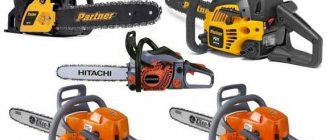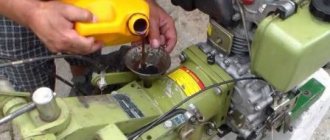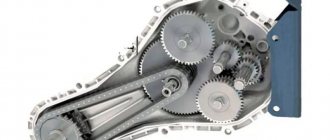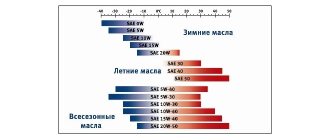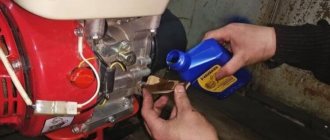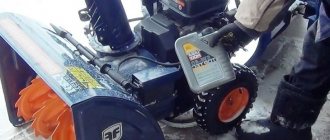- home
- Media center
- Articles
- What kind of oil is poured into KAMAZ power steering?
Menu
- News
- Articles
- Video materials
- Photo materials
- Publication in the media
- 3D tour
21.06.2019
Today, almost all relatively new tractors are available with power steering. Power steering allows the driver to spend less effort turning the steering wheel and stabilizes the movement of the vehicle. The steering on different models of Kama trucks works differently, and accordingly, the working fluids that lubricate the parts of the mechanisms will also differ.
For example, Kamaz 65115 has a left-hand steering wheel, in other words, the steering mechanism is located on the left side member of the vehicle frame. The steering wheel drive operates through the interaction of a driveshaft and sliding spline with an angular drive and bevel gears.
Power steering Kamaz 4310, 5320 have a blade structure with a gear drive of a pump driven by the engine crankshaft.
The basis for the operation of hydraulics, in addition to the mechanism parts, is hydraulic fluid. Power steering oil comes in various types. Liquids can be divided by color, composition, and varieties.
The space between the outer surface of the rotor, the plates, and the inner surface of the starter (in variable-volume chambers) is filled with oil. For complete filling, the composition is supplied from the side of the power steering pump housing and the recess of the distribution disk, which has six holes.
Which oil to choose for a certain tractor model?
Hydraulic fluid, like a traffic light, can be red, yellow, or green. Some car owners are guided by the color aspect when choosing, however, this approach is not entirely correct. Also, some vehicle manuals indicate which colors can be mixed with each other. However, the possibility of mixing should be determined mainly by the composition, and not by the color scheme. After all, any liquid, mineral or synthetic, can be presented in any color.
- Red ATF transmission oil is mostly synthetic. The most popular brand is considered to be General Motors, namely the Dexron series. Although in this segment oils from well-known companies Motul, Shell, and Zik are considered no less popular.
- Yellow is produced mainly by one concern, Daimler, and is used in Mercedes-Benz trucks. There are two options available: synthetic or mineral.
- Green working fluid is the most universal, used in most power steering systems of various vehicles, it can be synthetic and mineral. This type is used in power steering, suspension, transmission systems and other mechanisms in which oil plays an important role. The green composition cannot be mixed with other colors only if the manufacturer declares full compatibility of the products. For example, green Comma is compatible with some types of red Dexron.
So, color difference plays a very important role. Different colors serve as a signal to the driver to combine different oils with the greatest care. However, color is only the tip of the iceberg of the distinctive features of working fluids. The most important is their composition, in other words, those components that manufacturers put in to improve hydraulic performance.
Different types of oils
Dexron is a separate class of ATF fluids from General Motors, produced since 1968. Dexron is a trademark, produced both by GM itself and by other companies under license.
ATF (Automatic Transmission Fluid) - oils for automatic transmissions, often used by Japanese automakers and in power steering.
PSF (Power Steering Fluid) - literally translated as power steering fluid.
Multi HF are special, universal power steering fluids that have approvals from most automobile manufacturers. For example, CHF liquid, produced by the German company Pentosin, has received approvals from BMW, Ford, Chrysler, GM, Porsche, Saab and Volvo, Dodge, Chrysler.
Differences in composition
The composition of power steering fluids can be divided into mineral, semi-synthetic, and synthetic. The composition of the oil determines its chemical properties, which improve system performance. The following set of basic functions of oils are distinguished:
- The viscosity of materials plays a big role. Viscosity determines the flow capacity of the liquid into the mechanisms and the degree of envelopment of parts.
- The lubricating qualities for each mechanism, or for one mechanism but for different KamAZ models, will be different.
- Anti-corrosion protection of the system. Some oils, in addition to their lubricating properties, can protect parts from corrosion.
- Prevents foam formation. In hydraulics, most working processes take place under the influence of high temperatures. Often liquids simply boil or “go into foam.” To avoid this situation, it is necessary to use certain compounds.
- Different oils behave differently at different temperature coefficients and degrees of heating. Among other things, they have different hydraulic properties.
Almost all formulations are based on additives. It is the incompatibility of additives that causes the general incompatibility of liquids. For example, synthetics and mineral water are completely incompatible with each other precisely because of the radical difference in additives.
Synthetic oils
This type is one of the most innovative; it contains high-tech additives of a new type. All oil fractions pass through a special hydrocracking system. The main additives for synthetics are polyesters and polyhydric alcohols, which allow working with a wide temperature range, creating a long-lasting oil film on the working surfaces of parts, and also have a long service life, that is, they are rarely topped up or replaced, from maintenance to maintenance. If the hydraulic booster is designed for mineral oils, adding synthetics to it is strictly prohibited. Synthetics have an extremely aggressive effect on any rubber parts or surfaces, of which there are a lot in power steering. In hydraulics designed for synthetic fluids, the rubber is made in a special way and has a special silicone base, which is the least sensitive to aggressive environments.
Steering KamAZ 6520
The steering is with a hydraulic booster built into the steering mechanism, the working pair is a screw with a nut on circulating balls and a rack that engages with the toothed sector of the bipod shaft. The steering gear ratio varies from 18.2 in the middle position of the bipod to 21.5 in the extreme positions.
The steering mechanism, model C700VW.117.009 from RBL, is installed on the left side member of the car frame. The cylindrical spur gearing of the piston and the bipod shaft has a high surface finish, so the wear of both gears is extremely small, which makes it possible to reduce maintenance of the steering mechanism to a minimum. The gearing of the bipod shaft in its middle position has no clearance.
The mechanism has a valve with a rotary spool, which consists of a rotary spool operating in a worm on a needle bearing with 6 metering grooves around the circumference and a worm head located in the steering gear housing, also equipped with 6 metering grooves. The worm and spool are drilled and pinned together with a torsion bar, which holds the metering valve in a neutral position, which corresponds to straight-line movement, until a counter force is applied to the steering wheel. If torque is transmitted from the steering wheel or steering wheels to the worm, the torsion bar is deformed and the rotary spool rotates relative to the worm head, thereby placing the metering valve in the operating position. The oil located at the metering valve enters through the now open metering grooves into one of the two cavities of the working cylinder and enhances the turning movement due to pressure on the piston surface.
The RBL mechanism is equipped with a hydraulic rotation limiter. This device prevents damage to the steering rods, since at the final position of the piston the adjusting screw rests against the limit valve, which allows oil to drain.
In this case, the hydraulic force is significantly reduced, and the steering wheel can be turned all the way only with additional effort.
The RBL model P1617 power steering pump is a vane pump with a capacity of at least 9.0 l/min at 600 min-1 and a pressure of 7000 kPa (70 kgf/cm2). The maximum pressure in the system is 17000 kPa (170 kgf/cm2). The pump drive is gear driven from the engine crankshaft.
The pump reservoir is equipped with a paper filter and an oil level indicator, mounted on the engine on an additional bracket. The paper filter must be changed every 100 thousand km.
The steering rods are tubular, with standardized ends. The threaded connection of one of the tips with the rod of the bipod allows you to adjust the length of the rod.
The steering wheel is located on the left. The drive from the steering wheel to the steering mechanism is carried out via a cardan shaft with a sliding spline connection and an angular transmission with bevel gears.
The power steering radiator is made of finned aluminum tube, located in front of the engine cooling radiator.
Removing air from the hydraulic system (bleeding) is carried out with the longitudinal rod disconnected from the bipod.
To do this, turn the steering wheel to the right until the force begins to increase and return it to the left position again, repeat this cycle at least three times. Then add oil to the pump reservoir.
Check the oil level in the power steering pump reservoir with the engine running and the front wheels of the car in a straight line.
The normal level should be between the marks on the tank body. Checking the oil level in the tank is done with a pointer mounted in the tank lid.
www.remkam.ru
Mineral compositions
The so-called “mineral waters” basically contain about 85-98 percent of petroleum fractions. The rest consists of various additives that improve the performance of hydraulic fluid. This type is used in hydraulic systems that have a large number of rubber-based parts, since mineral water has a neutral environment that does not corrode rubber surfaces.
Mineral compositions are considered the most budget-friendly, but their service life is correspondingly short. Good mineral oils are produced by Mobil and Dexron.
Is it possible to mix?
Mixing oils is acceptable, but must be done with great care. The main thing is to follow the manufacturer’s recommendations, which often indicate on the packaging which brands and classes can be mixed with. It is not recommended to make your own decision about mixing, for example, synthetics with mineral water, if the manufacturer does not give such recommendations. However, anything happens on the road, sometimes you have to fill in what you managed to find here and now. In this case, as soon as possible, it is recommended to completely drain the mixed fluids, replacing them with one used for this hydraulic system.
Owner reviews and prices
Purchase and rental price: the engine cannot be rented, it can only be purchased. The average cost is 500,000 rubles.
Alexander, 53 years old, Lipetsk: “I work on a KamAZ truck with an ISBe engine. During 3 years of operation, the starter and radiator had to be replaced.”
Ivan, 44 years old, Voronezh: “In six months of work, we already had to change the injectors 2 times. Otherwise the engine is running properly."
Mikhail, 35 years old, Izhevsk: “During 4 years of work there were few breakdowns. I only replaced the front crankshaft oil seal.”
Pavel, 36 years old, Arkhangelsk: “I’ve changed all the rollers and belt 2 times in the last 3 months. We also had to replace the pumps.”
Dmitry, 47 years old, Magnitogorsk: “Over 5 years of operation, I only changed the bearings once. Good engine with high power ratings."
Engine oil
Is it possible to pour it into the power steering? The unequivocal answer is no. Transmission fluid is allowed to be filled only in certain cases and quantities. The main reason for this precaution is the different functional characteristics of different types of oils. What qualities should power steering compounds have?
- Mandatory lubricating effect.
- Protective properties against metal corrosion, increasing the wear resistance of parts.
- By means of bypass valves, create pressure inside the system.
- Prevent foam formation.
- Cool the system.
These properties are possible thanks to various additives added in different proportions. Motor oil has a slightly different functionality, so it may simply not cope with the work of hydraulics. Transmission compounds have separate reservations, due to the presence of additives in them; some Japanese manufacturers recommend using ATF as a universal fluid. Europeans, on the contrary, call for separating hydraulic and motor oils.
That is why the question “what kind of fluid to pour into the hydraulic system” can be given a definite answer - recommended by the vehicle manufacturer. If the technical documentation from the car has not been preserved, this information can be found on the tank or lid. In any case, it is unacceptable to experiment with compounds on your own, because the hydraulic unit is one of the systems that ensures the safe movement of the vehicle and its stabilization on the road.
Kamaz trucks usually require about four liters of working hydraulic fluid. This is approximately four times more than what is poured into a passenger car. Volumes may be slightly smaller or larger (depending on the Kamaz model).
Level control is visible in the expansion tank, which has two main marks - minimum and maximum. The ideal level is between these indicators. If it is minimal, you need to urgently top it up; if it is maximal (due to high temperatures), the liquid may overflow, forming smudges.
To add liquid, unscrew the cap of the expansion tank, adding the amount required to the ideal intermediate level. During the first top-up, when the tank contains liquid filled from the factory, it is much easier, without having technical documentation at hand, to figure out what color the composition needs to be filled. However, we determined above that the color difference is the least significant, the additives are most important, so if there is no documentation with clear instructions, it is better to contact an authorized service center and clarify the information.
Removing air from the power steering system on a KamAZ (correct “bleeding the steering”)
Home › Repair
When filling the KamAZ power steering system with oil or after troubleshooting, it is necessary to remove air from it (“bleed” the steering).
To do this you need:
- Raise the front axle so that the wheels do not touch the ground. Using a jack, place trestles under the beam on both sides. But under no circumstances start pumping with the wheels standing on the ground. Or disconnect the longitudinal link from the steering bipod.
- Remove the pump reservoir filler cap.
- Remove the rubber cap from the steering gear bypass valve and place a transparent elastic hose on the spherical head of the valve, the open end of which is lowered into a glass container with a capacity of at least 0.5 liters. The vessel should be filled with oil to half its volume.
- Unscrew the steering gear bypass valve ½……3/4 turn.
- Turn the steering wheel LEFT until it stops.
- Pour oil into the pump reservoir until the level stops decreasing.
- Start the engine and, while operating at minimum crankshaft speed, add oil to the pump reservoir, not allowing the level to drop until air bubbles stop emitting from the hose placed on the bypass valve.
- Close the bypass valve.
- Turn the steering wheel to the RIGHT until it stops and back to the LEFT position. Keeping the steering wheel in the left position, unscrew the bypass valve ½……3/4 turn and again watch for the release of air bubbles. After the bubbles stop, close the bypass valve.
- Repeat the previous operation at least two times. As a result, clean (without air) oil should come out of the bypass valve. If the release of air bubbles continues, repeat the operation 1-2 more times, while monitoring the oil level in the pump reservoir, maintaining it between the marks on the level indicator.
- Stop the engine.
- Remove the hose from the spherical head of the bypass valve and place the protective cap on it. Check the oil level in the pump reservoir again and, if necessary, add oil. Install the pump reservoir filler cap. If you disconnected the longitudinal steering rod, install it in place.
The process of removing air from the system is complete.
11/24/2014 Removing air from the power steering system on a KamAZ (correct “bleeding the steering”) Link to the main publication
razvar.ru
